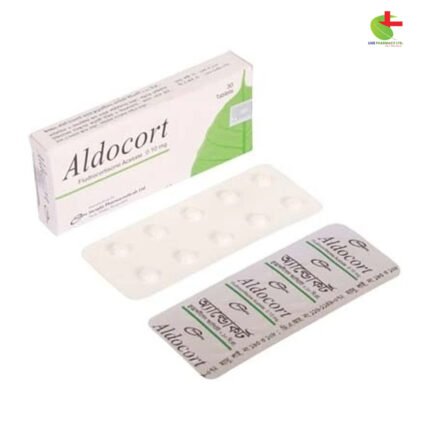Larcadip
50.00৳ Strip (10 Tablets)
- Larcadip (Lercanidipine) is a calcium channel blocker used to treat mild to moderate essential hypertension.
- It works by relaxing blood vessels, reducing resistance, and lowering blood pressure.
- The medication is typically taken once daily, with dose adjustments based on individual response.
- Larcadip should be used under the guidance of a healthcare professional, especially in patients with renal or hepatic issues.
 Brand
Brand
|
Incepta Pharmaceuticals Ltd |
|---|---|
 Generics
Generics
|
Lercanidipine Hydrochloride |
 Type
Type
|
Tablet |
Indications:
Larcadip is used for the management of mild to moderate essential hypertension.
Always follow the advice of a registered healthcare professional when using this medication.
Pharmacology:
Lercanidipine, a selective calcium channel blocker from the dihydropyridine class, works by inhibiting calcium influx into smooth muscle cells. This mechanism leads to the relaxation of vascular smooth muscle, which in turn reduces total peripheral resistance and lowers blood pressure. Due to its high vascular selectivity, Lercanidipine maintains a prolonged antihypertensive effect without causing negative inotropic effects. It has a high membrane partition coefficient, ensuring sustained activity.
Dosage & Administration:
- Elderly patients: The recommended starting dose is 10 mg taken orally once daily, at least 15 minutes before meals. Depending on the patient’s response, the dose may be increased to 20 mg. Maximum antihypertensive effects may take up to 2 weeks to be fully realized.
- Combination therapy: In patients not adequately controlled on a single antihypertensive, Lercanidipine can be combined with other medications such as beta-blockers (e.g., atenolol), diuretics (e.g., hydrochlorothiazide), or ACE inhibitors (e.g., ramipril).
- Children: Lercanidipine is not recommended for use in individuals under 18 due to the lack of clinical data.
- Renal and hepatic dysfunction: Special caution is required for patients with mild to moderate renal or hepatic impairment. Doses above 20 mg daily should be carefully considered, and Lercanidipine is not recommended for patients with severe renal or hepatic dysfunction.
Always consult a healthcare professional before starting treatment.
Drug Interactions:
Avoid concurrent use of Larcadip with the following medications: cyclosporine, phenytoin, carbamazepine, rifampicin, ketoconazole, itraconazole, ritonavir, erythromycin, troleandomycin, and midazolam.
Exercise caution when prescribing Larcadip alongside drugs like astemizole, amiodarone, quinidine, cimetidine, metoprolol, and simvastatin.
Contraindications:
Lercanidipine should not be used in patients with:
- Left ventricular outflow tract obstruction
- Untreated congestive heart failure
- Unstable angina pectoris
- Within 1 month after a myocardial infarction
- Known hypersensitivity to dihydropyridine compounds
Additionally, Lercanidipine should not be taken with grapefruit juice.
Side Effects:
Larcadip is generally well tolerated. The most common side effects are related to its vasodilatory effects and may include:
- Flushing
- Peripheral edema (swelling)
- Headache
- Dizziness
- Weakness (asthenia)
Less common side effects (occurring in less than 1% of patients) include:
- Fatigue
- Gastrointestinal issues such as dyspepsia, nausea, vomiting, epigastric pain, and diarrhea
- Polyuria (increased urination)
- Skin rash
- Drowsiness (somnolence)
- Muscle pain (myalgia)
Pregnancy & Lactation:
Due to the lack of clinical data on the use of Lercanidipine during pregnancy, it is not recommended during pregnancy or for women of childbearing potential unless effective contraception is used.
Lercanidipine is highly lipophilic and is likely to be distributed in breast milk. Therefore, it should not be used by nursing mothers.
Precautions & Warnings:
Caution should be taken when using Larcadip in patients with:
- Sick sinus syndrome
- Left ventricular dysfunction
- Ischemic heart disease
Overdose Effects:
In the event of an overdose, excessive peripheral vasodilation may occur, leading to significant hypotension (low blood pressure) and reflex tachycardia (rapid heart rate). Due to its high lipophilicity, plasma levels are not an accurate guide to overdose duration, and dialysis may not be effective.
Therapeutic Class:
Calcium Channel Blockers
Storage Conditions:
Store Larcadip below 30°C, away from light and moisture. Keep out of reach of children.













Reviews
There are no reviews yet.